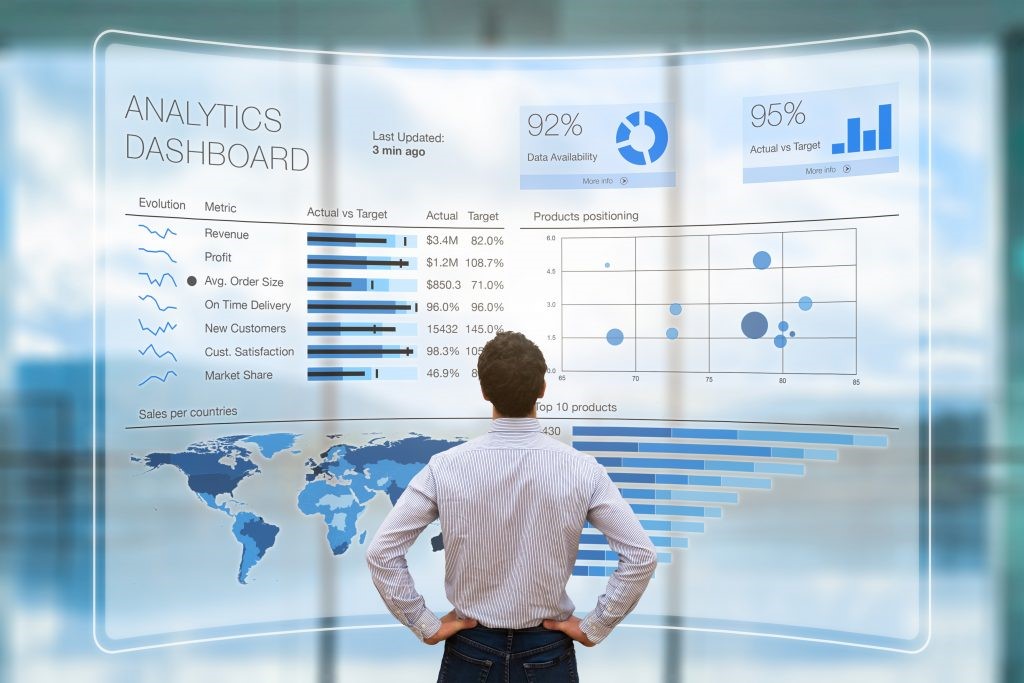
A conversational way of talking about Business Intelligence

Business is run with the ultimate goal of doing something productive to serve someone’s needs and thus earn a living and have an impact on society.
Business transactions and activities are recorded on papers and documents or electronic systems. All of these records generate and become data. All this data can be leveraged to the business benefit through analyzing and mind them using special tools to generate intelligence, insights, and the guide your organization make the best-informed decisions about how the business is/going to be functioning. All of that feedback about the business become more effective and efficient in achieving your ultimate goal.
Nowadays, we live in a technology-driven society and as the technology evolve, the amount of the data collected evolve too. Business collect a massive amount of data about their customers, sales, product, operation and much more. All of these data move very fast and constantly become bigger too and sometimes surpass the processing capacity of the existing technology application of the business. You can imagine all of that as the business operates within a simple cycle as shown as follow:

So, what's the benefit of business intelligence? BI applications and solutions come to help business take advantage of this data to its leverage. Any business needs to monitor its environments, the competitors, the stakeholders especially the customers, the industry in order to adjust the way it operates and their plans. All of that required a new level of reports (Dashboards) to deliver the required information to everyone in the organization in a more interactive and real-time way.
Business intelligence (BI) leverages software and technology to transform data that comes from different sources into actionable intelligence or insights that inform an organization’s strategic and tactical business decisions. BI is some set of an Information technology solution that Includes tools for gathering, Analyzing, and reporting information to the users about the performance of the organization and its environments, also sometimes these tools are helpful in predicting and forecasting the future. Business intelligence is also called descriptive analytics, in that it describes a past or current state of the business. In a simple way, it does not tell you what to do but instead, it tells you what has happened.

However, the BI tools do not tell you what will happen if you take certain action or make specific decisions it doesn’t mean that BI tools only about generating reports. Rather, BI offers a way for business people to examine data from different source to understand trends and extract insights and intelligence to do your jobs better.
For example, a company that wants to better manage its inventory needs BI capabilities to determine and identify the fast- selling items, regional-selling items, seasonal items, fast-growing customer segment, and also might help in identifying what products sell together, which people tend to buy which product and much more. All of that information and insights can help design better promotion plans, product bundles or packages, organizing the store layout.
A company that wants to better manage its supply chain needs BI capabilities to determine and Identify where delays are happening and discover which products are most commonly delayed or which modes of transportation are most often involved in delays. In addition to all of the above, the potential use cases for BI extend beyond the typical business performance metrics of improved sales and reduced costs, BI application extends to educations, Hospitality, etc.
In the past, IT professionals or the technicians had been the primary users of BI applications to serve the organization reporting needs. However, BI tools such as self-service have evolved to be more intuitive and user-friendly for the business user (End-users), enabling a large number of users across a variety of organizational domains to tap the tools.
Business intelligence tools

As we said the BI tools evolve very fast to be not only for IT people but also for business users and there are two types of BI. The first is traditional or classic BI, where IT professionals use in-house transnational data to generate reports. The second is modern BI (Self-service), where business users interact with intuitive systems to analyze data more quickly and easily.
BI Software vendors are reacting to the organizational demand for multiple capabilities classic and modern BI as well as descriptive and predictive by re-engineering their products to include multiple functionalities within their platforms.
However, IT still plays a critical role in every BI environment and its success in many organizations, IT has enabled self-service BI for business users. IT still has to set and manage policies, governance and the data and access to it as well as continuing work with users to ensure the BI tools are delivering the insights they need.
But in overall companies have improved their agility by increasing user independence from IT departments as with self-service BI tools, business users can carry out a number of analyses and report building without reliance on the support of an IT team.
The future of business intelligence

As the need of the organizations about an accurate understanding of past events and current states will continue to evolve. These organizations will continue to invest in their BI solutions and will rely more on advanced analytics to forecast the future.
According to Gartner report Global revenue in the business intelligence (BI) and analytics software market is forecast to reach $18.3 billion in 2017, an increase of 7.3 percent from 2016, according to the latest forecast from Gartner, Inc. By the end of 2020, the market is forecast to grow to $22.8 billion. Modern BI and analytics continue to expand more rapidly than the overall market, which is offsetting declines in traditional BI spending.
At the end, many executives used to see business intelligence as a key buzzword but nowadays it’s a story of success in every business to empower them to make smart, data-driven decisions.